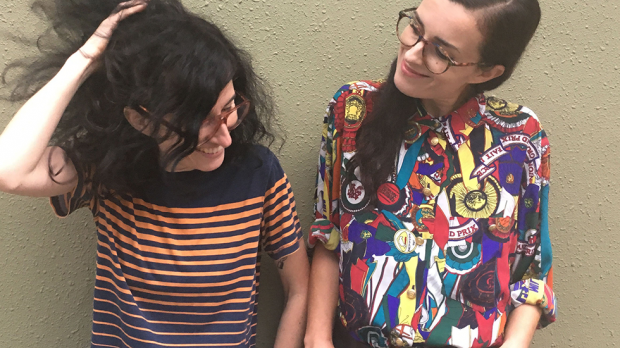Honestly, it’s almost impossible to describe TERROR NULLIUS. Touted as a political revenge fantasy told in three acts, the film is constructed from hundreds of samples of iconic Australian film and TV and shaped into something extraordinary. Instead of a lumbering Frankenstein, it is a nimble chimera – cutting and venomously iconoclastic. With TERROR NULLIUS showing as part of The Revelation Perth International Film Festival DAVID O’CONNELL spoke to two person art collective Soda_Jerk about their fascinating re-imagining of Australian cinema and national identity.

How would you describe what it is you do?
All the films we make are entirely constructed of samples from existing films, music and media. So we kind of think of ourselves less like filmmakers and more like renegade archivists.
What led you to this method of image making?
We were first switched onto sampling through the experimental hip-hop and queer performance scenes we were part of in Sydney in the late 90s. It wasn’t just that audio sampling was a big part of the way that people were working, but also that these scenes were intertwined with this resilient and pervasive DIY, punk and squat culture. So the idea of seizing privatised resources and politically appropriating them was running parallel to the ways that people were engaging with sound and technology, and even real estate. And because we were also fanatical about cinema, we became interested in thinking through how these kinds of methodologies and politics could be applied to video.
What sort of rough structure do you work from? Does theme come first, does structure come first, or do you have a number of clips you can see a link between and develop and extend it from there?
All these factors work in a kind of relentless feedback loop. We can never really determine the narrative in advance because the edit is constantly morphing as new samples emerge. But we do always start with a pretty concrete conceptual framework that guides our structural development. In the case of TERROR NULLIUS we plotted a map of historical vectors that we used as touchstones for shaping the narrative. Things like Gough Whitlam’s 1975 dismissal, the Tampa Crisis, the so-called Bicentennial Celebrations, the rise of Pauline Hanson, the marriage equality vote and the MABO decision.
You cover a lot of thematic ground in TERROR NULLIUS, how do you go about de-constructing and unmaking a national mythology?
The thing is that there are already so many incredible Australian films that dismantle and reconfigure our national mythologies in these complex and compelling ways. Movies like Lucky Miles, Mystery Road, Priscilla, Wake in Fright, or Down Under. So going into TERROR NULLIUS we didn’t really see it as our role to simply flip the script of the texts we were working with. We were much more interested in setting these films in motion together, delivering them into a new constellation and conversation.
There are exceptions to that too of course. Something like Crocodile Dundee is such a horrifically misogynistic and transphobic text that we knew we had to create an edit that would deliver Mick Dundee to a crocodile’s jaws.
What prompted you to tackle those themes?
A sense of being truly pissed with the state of politics in this country. A feeling of rage at just how far any kind of social justice seems to be from the national political agenda. Of watching the horror unfold on Manus Island, the government poll people’s right to love one another, or the way that large portions of the federal budget are still being sunk into expensive monuments to Captain Cook.
How many clips, film and TV segments, snippets of sound etc have been used to create the whole?
There are a couple of hundred different sources remixed in the project, but the number of individual samples runs into the thousands.
How long did a project like this take?
Conceptually we’d had the idea of TERROR NULLIUS for over a decade, ever since we made the short video Picnic at Wolf Creek in 2006. But we always knew there was a bigger, graver Australian political revenge fable we wanted to make. We started working on it in earnest in late 2016 when we received The Ian Potter Moving Image Commission. We basically descended into our basement studio in Brooklyn and didn’t emerge until it was finished 18 months later. The rotoscoping and digital effects involved in our work is ridiculously labour intensive, so we spend a stupid amount of time at our computers.
What opportunity does an event like The Revelation Perth International Film Festival offer for filmmakers (and film goers)?
We really do get the heavy sentimentals about film festivals, there is absolutely nothing not to love about seeing a whole heap of films with their filmmakers and like-minded cinephiles. We like to think of cinema as nothing less than a practical magic for the conjuring of new collective solidarities and the revelation of mystic truths.